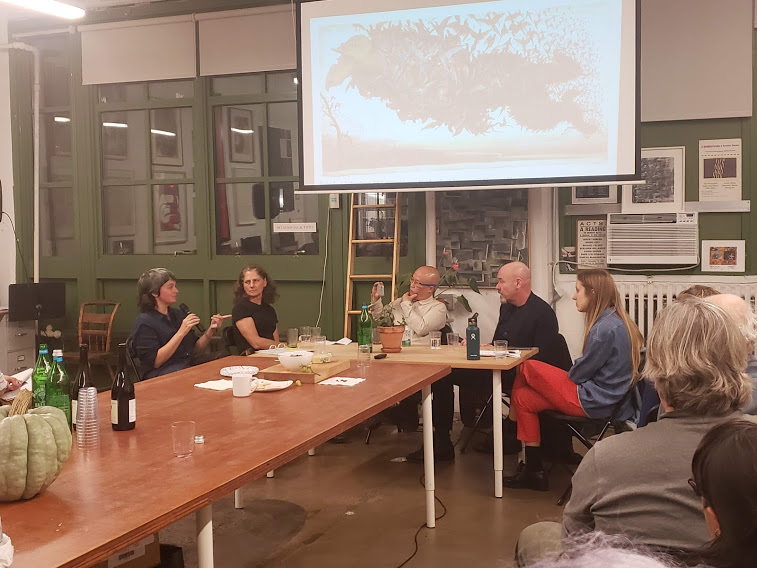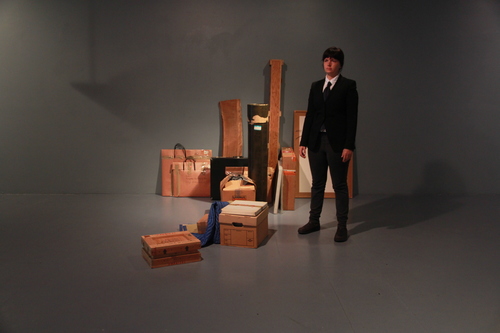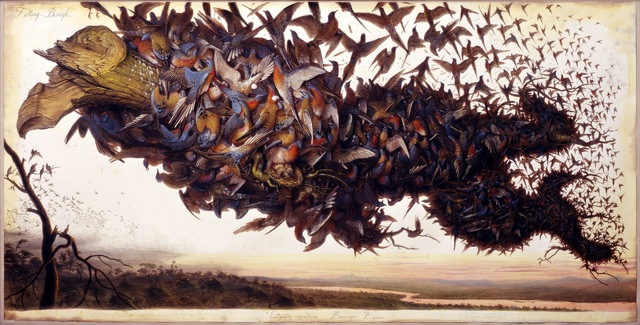This week’s contributing author, Cali Buckley, works at CAA. She has a PhD in art history from Penn State University and spent her Fulbright Fellowship in Nuremberg, Germany. She continues to study northern Renaissance art and the history of science.
In the panel discussion Archival Resources: Self-Made, Discovered, Inherited, held at the Brooklyn Rail on October 22, 2019, contemporary artists reworked the role of archives, making them active materials in art making. Archives are by definition repositories of the past, but each project reinvigorated objects and documents to comment on the concept of utilizing the archive in new works. Panelists included artists Mira Friedlaender, Sara Cwynar, and Walton Ford, and moderators Jennifer Gross and Phong Bui.

Sara Cwynar was presented with the opportunity to create an Instagram video for the Museum of Modern Art using their museum archive. Using the black-and-white phantoms of past exhibitions and a structure of commentary based on John Berger’s Ways of Seeing, Cwynar’s necessarily brief one-minute videos bombard the viewer with objects and text critiquing the history of art—which is reflected in the MoMA archive itself and which, ostensibly, reflects the criticism and questions of museum-goers. The camera glides across, skips, and rewinds over a palimpsest of surrealist photography, consumer goods, and what look like remnants from a MoMA store shopping spree as a singular voice speaks clearly but rapidly, sometimes layering over itself. The videos seem to mimic the neural firings of a viewer first diving into the archives but also offers new thoughts on how to critique objects beyond discussing their objecthood.
Mira Friedlaender’s approach to the archive was different based both on the archive itself and her impetus to reactivate the archives. Following the death of her mother, artist Bilge Friedlaender, her works were passed down through the family. The elder artist had personally culled a number of paintings in the 70s but had preserved many more without providing instruction on their preservation and use. After an initial period of storage, Friedlaender presented the tubes and crates as actors in their own rediscovery. In an early tableau, Friedlaender posed as a museum guard with her mother’s unopened works, treating the container and its hidden holdings as works of their own. She then enacted the opening and exploration of the archive as a public performance. She held a residency at Recess in Soho in which she unpacked works she had never before seen and proceeded to install them in the gallery, only to be repack them and repeat the process over the course of six weeks.

Walton Ford is likely the most familiar with the typical historical archive, given his relationship with the archive of the Natural History Museum, but what he generates from the archive is anything but. Citing a longtime obsession with the museum’s dioramas (and their subsequent exploration in Donna Haraway’s 1984 article Teddy Bear Patriarchy), Ford reimagines the narratives of history to create fantastical paintings of improbable flora and fauna situated in a near psychedelic version of the natural environment. His Fallen Bough from 2002 illustrates anecdotes about carrier pigeons, most notably that their numbers were so large in the US that too many would alight on a branch and bring it down. In a whirling mass, the pigeons defecate, fornicate, and take part in Boschean mischief all while swarming a giant bough broken off from a tree.
The archives, in the hands of the artists, were made to perform and transform from static to active agents, expressing the ability of archives to forge newness rather than simply preserve that which is historical. This was one of three such events hosted by Hauser & Wirth Institute this fall that concentrated on the idea of the archive and taking part in different locations around the city. The moderators Phong Bui, Co-Founder and Artistic Director of the Brooklyn Rail, and Jennifer Gross, executive director of the Hauser & Wirth Institute, amplified the conversation, touching on the ideas that emerged from each artist’s projects: questions of how archives reflect on and affect notions of history, physicality, ephemerality, preservation, and reinterpretation. It is the intersection of the archive with contemporary art and the discussions it engenders that reach to a core idea: that the survival of artworks and documents goes well beyond the scope of physical protection and requires a critical eye toward conservation and adaptation.

